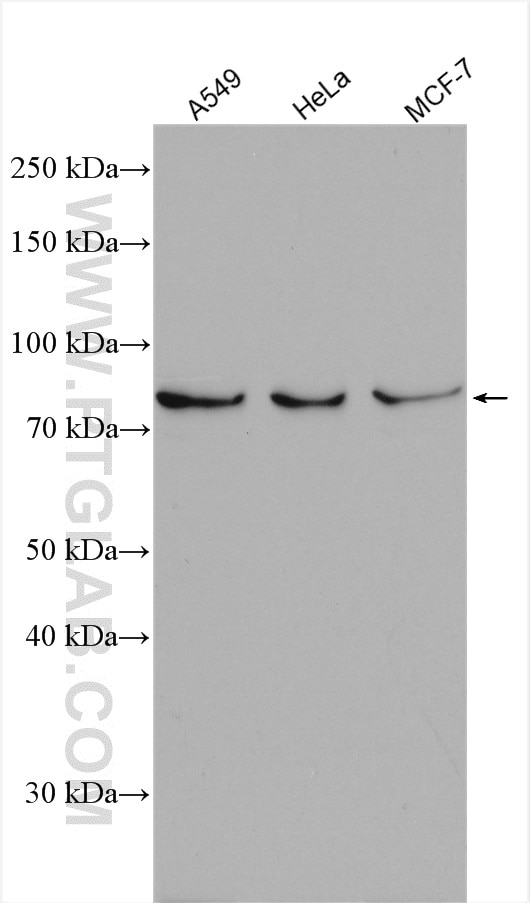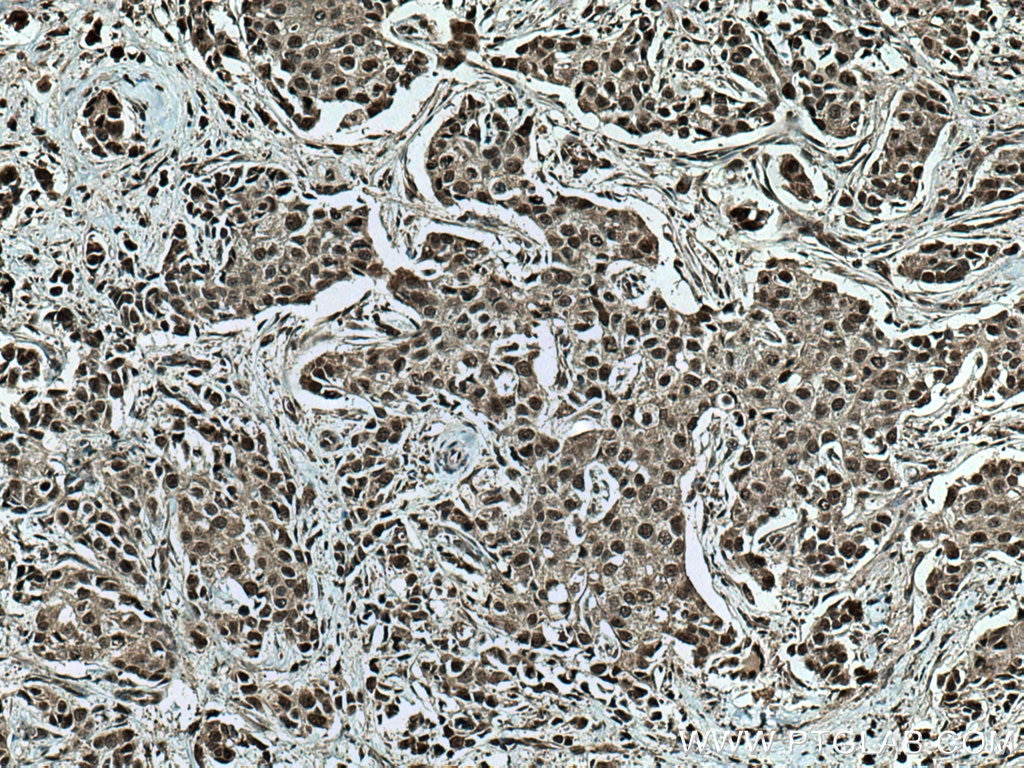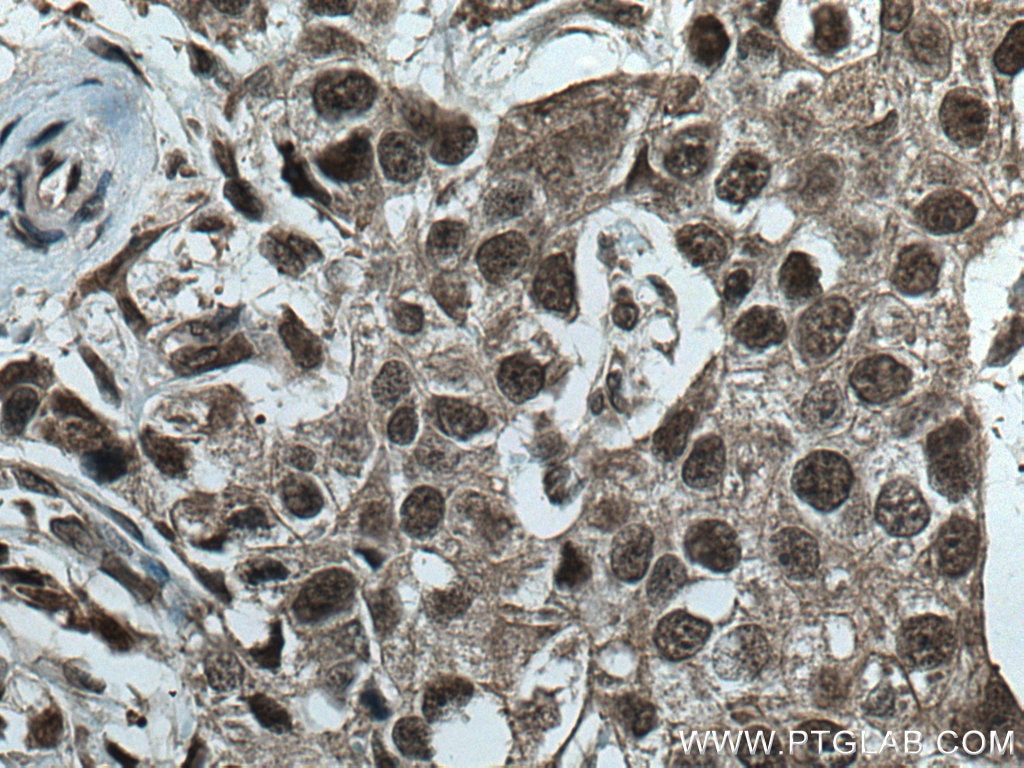Tested Applications
| Positive WB detected in | A549 cells, HeLa cells, MCF-7 cells |
| Positive IHC detected in | human breast cancer tissue Note: suggested antigen retrieval with TE buffer pH 9.0; (*) Alternatively, antigen retrieval may be performed with citrate buffer pH 6.0 |
Recommended dilution
| Application | Dilution |
|---|---|
| Western Blot (WB) | WB : 1:2000-1:10000 |
| Immunohistochemistry (IHC) | IHC : 1:50-1:500 |
| It is recommended that this reagent should be titrated in each testing system to obtain optimal results. | |
| Sample-dependent, Check data in validation data gallery. | |
Product Information
28404-1-AP targets CUL1 in WB, IHC, ELISA applications and shows reactivity with Human samples.
| Tested Reactivity | Human |
| Host / Isotype | Rabbit / IgG |
| Class | Polyclonal |
| Type | Antibody |
| Immunogen |
CatNo: Ag29145 Product name: Recombinant human CUL1 protein Source: e coli.-derived, PET28a Tag: 6*His Domain: 363-533 aa of BC034318 Sequence: PKMYVQTVLDVHKKYNALVMSAFNNDAGFVAALDKACGRFINNNAVTKMAQSSSKSPELLARYCDSLLKKSSKNPEEAELEDTLNQVMVVFKYIEDKDVFQKFYAKMLAKRLVHQNSASDDAEASMISKLKQACGFEYTSKLQRMFQDIGVSKDLNEQFKKHLTNSEPLDL Predict reactive species |
| Full Name | cullin 1 |
| Calculated Molecular Weight | 90 kDa |
| Observed Molecular Weight | 80 kDa |
| GenBank Accession Number | BC034318 |
| Gene Symbol | CUL1 |
| Gene ID (NCBI) | 8454 |
| RRID | AB_2881135 |
| Conjugate | Unconjugated |
| Form | Liquid |
| Purification Method | Antigen affinity purification |
| UNIPROT ID | Q13616 |
| Storage Buffer | PBS with 0.02% sodium azide and 50% glycerol, pH 7.3. |
| Storage Conditions | Store at -20°C. Stable for one year after shipment. Aliquoting is unnecessary for -20oC storage. 20ul sizes contain 0.1% BSA. |
Background Information
The cullin family proteins are scaffold proteins for the Ring finger type E3 ligases. Humans express seven cullin proeins: CUL1-3, CUL4A, CUL4B, CUL5, and CUL7. Each cullin protein can form an E3 ligase similar to the prototype Ring-type E3 ligase Skp1-CUL1-F-box complex. The Cullin-RING-finger type E3 ligases are important regulators in early embryonic development, as highlighted by genetic studies demonstrating that knock-out of CUL1, CUL3, or CUL4A in mice results in early embryonic lethality.
Protocols
| Product Specific Protocols | |
|---|---|
| IHC protocol for CUL1 antibody 28404-1-AP | Download protocol |
| WB protocol for CUL1 antibody 28404-1-AP | Download protocol |
| Standard Protocols | |
|---|---|
| Click here to view our Standard Protocols |








